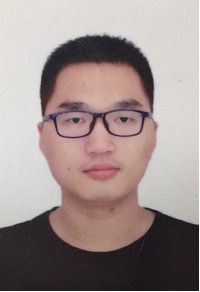Design and Optimization of
Thermal Conductivity of UO2 Composite Fuel Based on Finite Element
Simulation and Machine Learning
Biaojie Yan1*, Pengcheng Zhang1, Xiangdong Ding2, Cheng
Liang1, Bingqing Li1
1 Institute of Materials,
China Academy of Engineering Physics, Jiangyou, Sichuan 621700, China;
2 Xi'an Jiaotong University,
Xi'an 710049, China
ABSTRACT: The research and
development (R&D) of UO2 composite fuel has the characteristics
of long cycle, high cost, toxic and radioactive, in which the traditional
trial-and-error method applied is inefficient. Machine learning (ML) can
greatly shorten and reduce the cycle and cost of the R&D of a new material.
In this work, a method combining finite element method (FEM), ML and experiment
was established to realize rapid R&D of the new UO2 composite
fuel, whose details are as follow. The variation ranges of FEM input parameters
are determined according to the existing experimental and theoretical data. A
certain number of parameter combinations are obtained by proper sampling
methods within setting range, which are as the input of FEM modeling and
analysis. Then the set of FEM samples including predictive features and target
feature is generated. The features appropriate to predict target feature are
selected by feature selection methods, the mapping from predictive features to
target feature is constructed using proper machine learning methods, which are
verified by FEM and experimental samples. Combined with the proper optimization
methods, the reverse design from the target property to the predictive features
is realized. The main results obtained are as follow. Firstly, two predictive
models for predicting TC of composite fuels with dispersed and continuous
second-phase were established and verified respectively. Based on the models,
the bi-directional prediction of structural characteristics and TC of UO2-SiC
composite was realized with the relative error less than 5%; meantime, and a
microcrack-free UO2-2Mo (vol%) composite pellet was successfully
optimized and prepared, whose TC is about 20% higher than that of pure UO2.
Lastly, the predictive models of TC and thermal stress of UO2-Mo-Nb
multi-component composite were established and verified. The optimized
composition of UO2-3Mo-1Nb (vol%) was obtained by multi-objective
optimization, and the balance between TC and thermal stress of UO2-Mo-Nb
composite fuel was realized.
Keywords: UO2 composite fuel; Machine learning; Finite element method; Thermal conductivity

Biaojie Yan has a PhD in Engineering and is a graduate of the China Academy of Engineering Physics (CAEP). He is now working in the Institute of Materials of CAEP. He is mainly responsible for research in the field of machine learning and nuclear fuel. He has applied for more than 10 patents and published more than 10 papers in NPJ Computational Materials, Materials and Design, International Journal of Heat and Mass Transfer, Ceramics International and other academic journals.